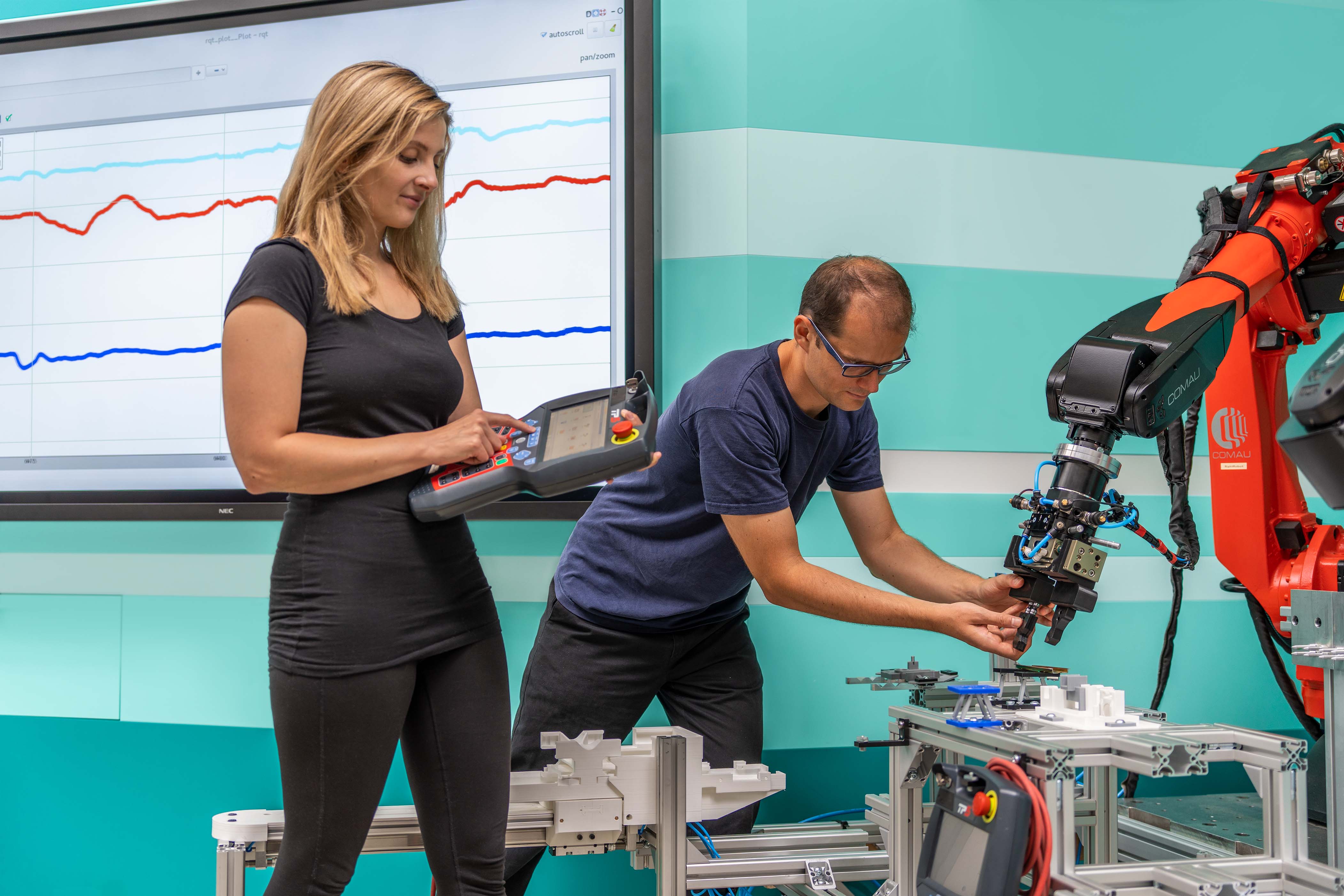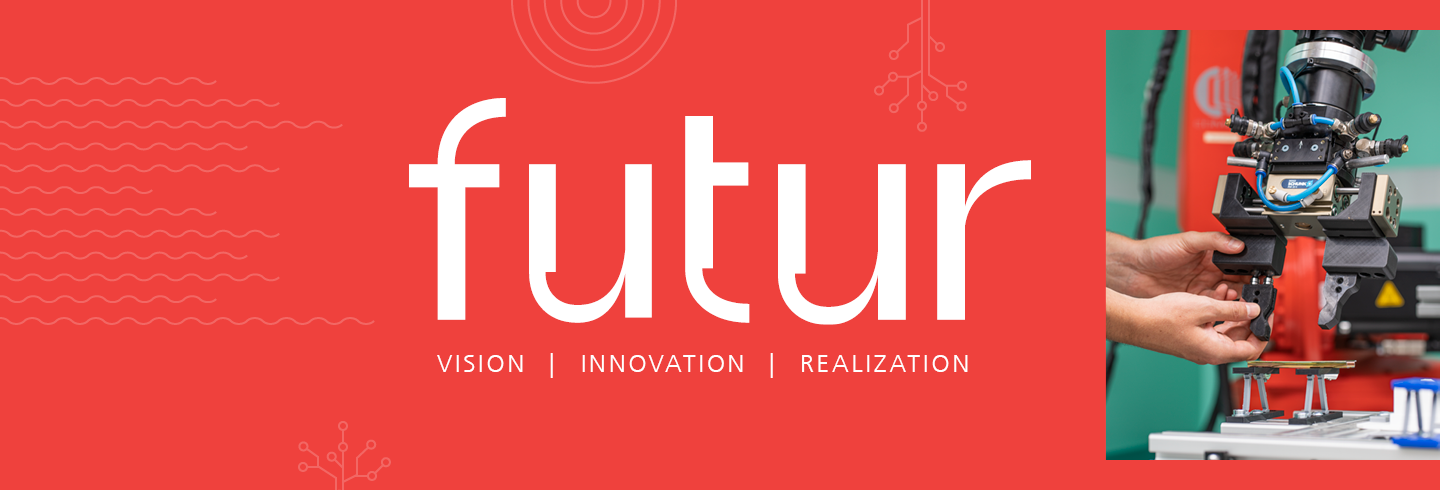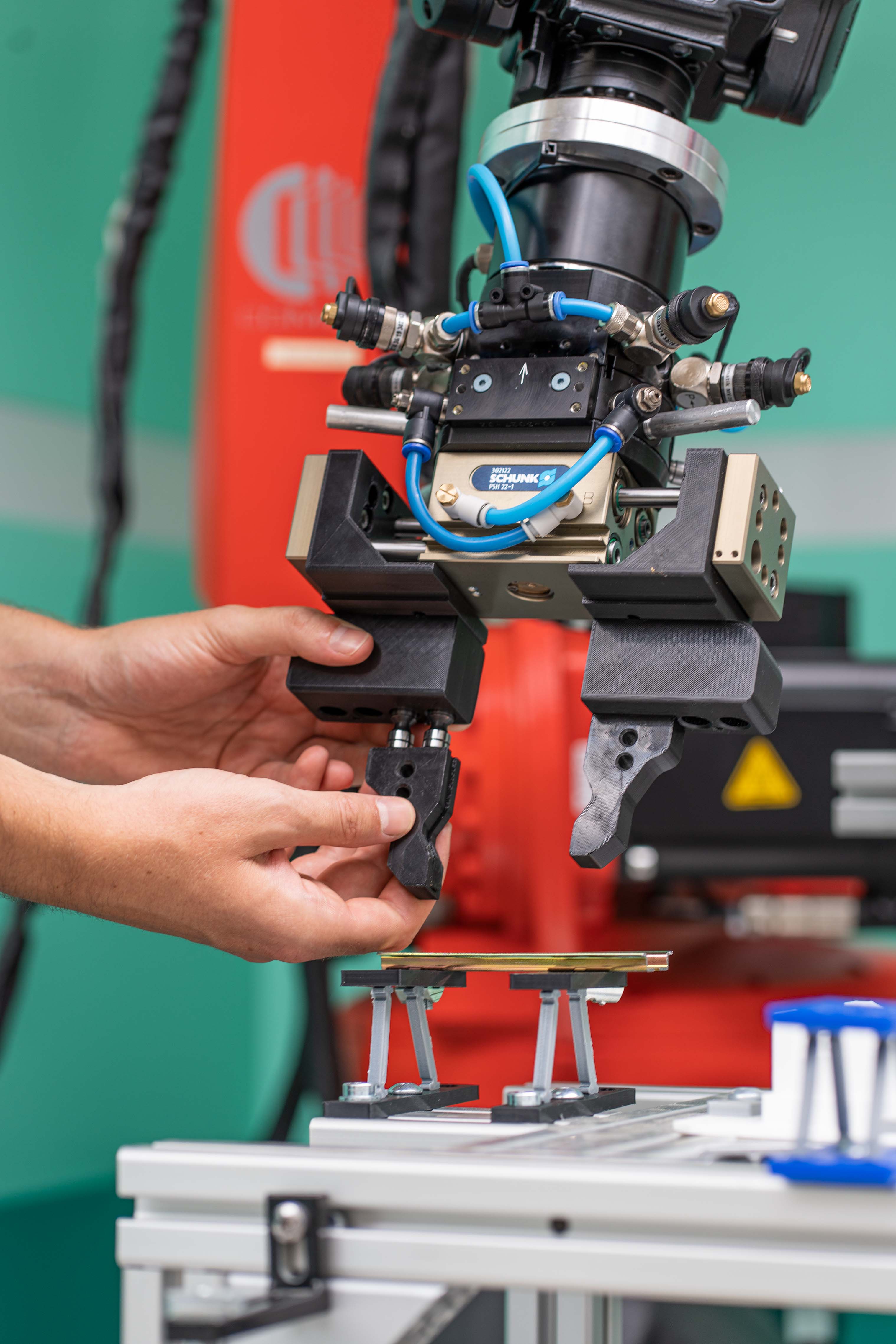From Cells to Lines
Short innovation cycles, individualized products, fragile supply chains: The environment for businesses in the production sector is becoming increasingly demanding. High-mix low-volume manufacturing continues to be important. In order to survive in the market, manufacturers see themselves forced to produce an increasing number of product variants in smaller and smaller batches. They also need to deal with extreme fluctuations in volume and batch size while staying economically viable. In times of crisis, this ability is crucial for survival.

Rethinking automation
How can production be made profitable even with frequent product changes, wide variations in batch sizes and very small quantities of products? Automated assembly lines usually only return a profit, if they operate continuously. Constant retooling of machines, if it can be done at all, is particularly costly and inefficient: Each retooling process incurs costs, because it ties up resources without generating any added value for the paying customer. The challenge is therefore to develop automated assembly solutions that keep setup time and costs to a minimum and can be adapted to wide variations in orders in a scalable way. A Fraunhofer IPK project team has taken on the challenge for a corporate customer.
The initial situation is as follows: The manufacturer produces high-quality electronic devices in a number of different variants for the global market. The devices, which are made up of around 100 individual parts, are assembled manually on around 20 different product-specific assembly lines. In the past, automation was not profitable because the quantities – compared to the automotive industry, for example – were too small for individual products. Because of the significant increase in the number of product variants and fluctuating customer requests, however, the number of setup processes increased from once every five days to once every day. With setup times of around two hours, this meant that production was no longer economical. In the medium to long term, the manufacturer is even expecting two setup processes to be carried out per day and a temporarily required capacity increase of 500 percent compared to the standard.
This gave rise to the need for a solution that would reduce setup times to around ten percent of the current time and make it possible to increase the capacity for individual product variants drastically in the short term.
A modular solution
»Our approach was to automate as many steps as possible and to implement them with multiple assembly cells that could be configured flexibly, almost universally,« explains Moritz Chemnitz, automation expert at Fraunhofer IPK. »These cells can then be used to build an assembly line that can produce a variety of different products depending on the order.« Modularization of this kind makes it possible for several assembly lines to manufacture exactly one product in parallel. This would optimally cover large fluctuations in demand. »The key question, therefore, was how this universal cell should be constructed.«
After carrying out an analysis of all the customer’s processes, the researchers developed a generic modular cell concept. This concept assigns each step to one of several categories, which then make up the submodules. It resembles a tool kit system and is designed around a few core principles that the project team implemented on a model basis:
Universally usable assembly cells must have only a small number of product-specific cell components, and these product-specific components must be easily swappable. Standardized interfaces between both the software systems and the hardware components ensure that submodules can be changed quickly and are easy to reuse. This also means that the production cells are relatively inexpensive to procure.
Robots in use for piloting
Based on this innovative modular concept, the design for the assembly cell was then developed at a robot-based pilot system at Fraunhofer IPK. To this end, researchers used digital twins to map individual machines, complex processes and entire value chains virtually so that they could be flexibly networked together and synchronized with each other. The result: At the center of the new assembly cell is an industrial robot that can be set up for various product families and easily configured for different tasks.
Stable process steps for the robot were then developed within the pilot system. The use of 3D printing technology allowed individual system components to be produced and tested quickly. In this way, the research team was able to develop product- specific equipment and grippers for the robot until they were ready to go into production.
The robot was also equipped with a force sensor to give it a sense of its environment. Special algorithms allow it to act in an almost human way and to use the right assembly parameters for the circumstances. This makes the assembly cell robust with respect to component tolerances or unforeseen obstacles.
Focusing on the human aspect
Looking back at the initial situation: The robot cell, i.e. the machine, combines the individuality and flexibility of a manual assembly line with the high task sharing of mass production. For the electrical device manufacturer, that means greater efficiency and better product quality in high-mix lowvolume production with varying batch sizes.
When it comes to resetting the robot cell, the researchers have already carried out the initial tests successfully. This has allowed them to identify processes and interfaces that ensure the shortest possible setup time.
On the other hand: »The resetting process is still complex and costly and cannot be automated well,« says Chemnitz. »Humans remain indispensable. However, their involvement needs to be optimized.«
Humans are no longer involved in the production process itself, only in the retooling process. Does that make them essentially superfluous? »Not at all,« says Chemnitz. »The human orchestrates and monitors a complex process – in this case, with the help of visualization techniques with digital twins tested in our pilot system. This reduces their exposure to hazardous movements and repetitive or dangerous work.«
This allows the production process to be largely automated. Far from being replaced, humans can devote their strengths to developing new processes and means of production while receiving optimum support: The pilot system and integrated force sensor have allowed manufacturing processes to be developed six times faster than before, with a 30 percent increase in reliability.
 Fraunhofer Institute for Production Systems and Design Technology
Fraunhofer Institute for Production Systems and Design Technology
